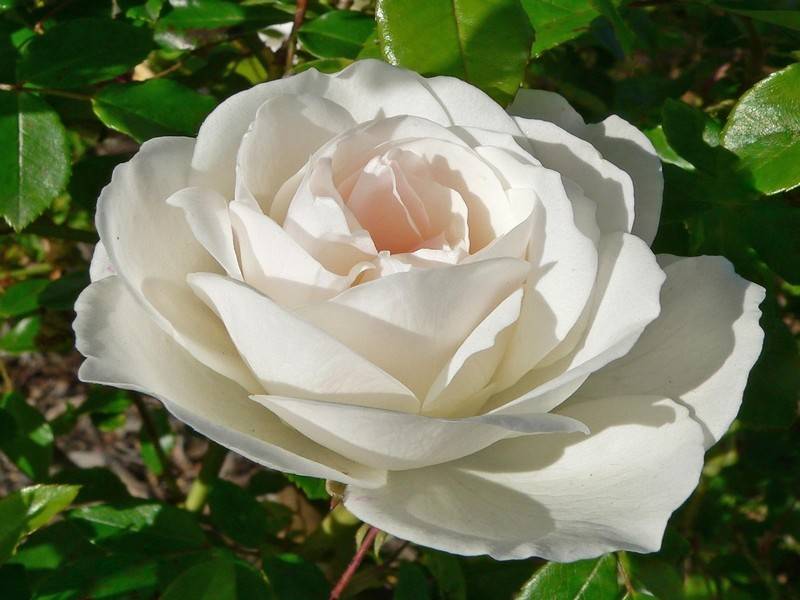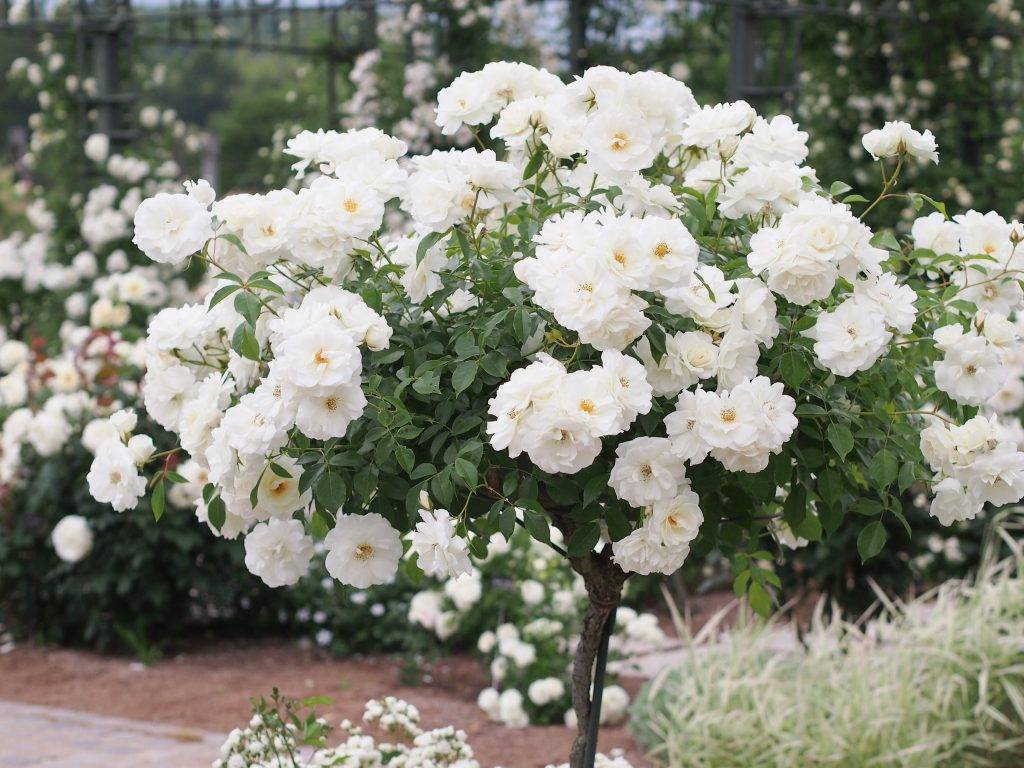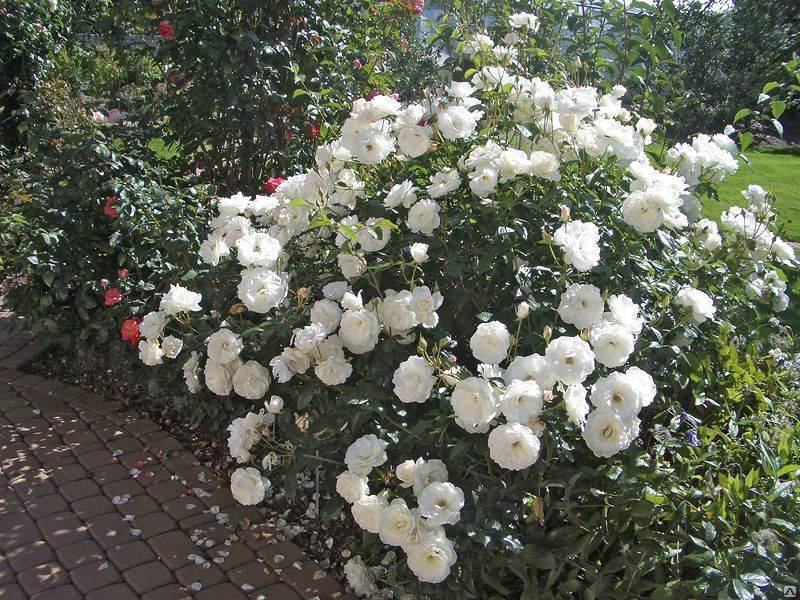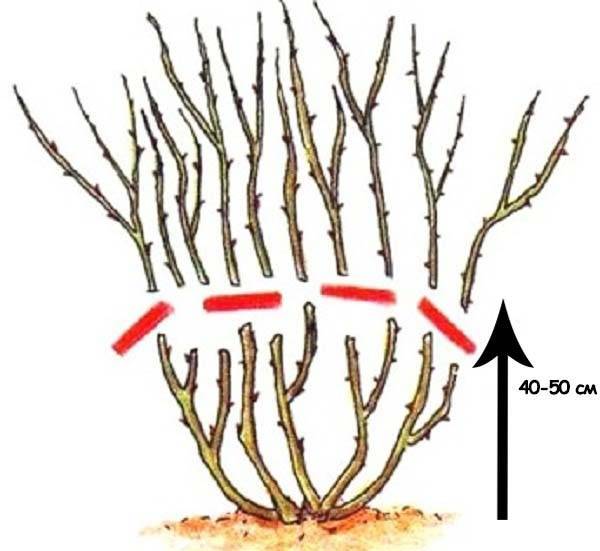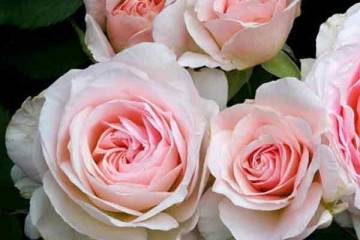Rose Schneewittchen - description of culture
Content:
The white climbing rose Schneewitchen, originally from Germany, is one of the most delicate examples of the classic decoration of gardens and parks. She has a delicate aroma and delicate, not very large, boiling white flowers. The seedlings are often sold under the name Iceberg.
Rose Schneewittchen - what is this variety, history of creation
The variety is climber, that is, re-flowering, and also floribunda, that is, abundantly flowering. Many attribute it to scrubs, that is, vigorous. Indeed, the height of the lashes often exceeds 2 m. It has been cultivated in gardens since 1958, sometimes forming a bush on a trunk.
Climbing rose Schneevitchen - short description, characteristics
Roses of varieties Robin Hood and Virgo served as breeding material. As a result, a bush was obtained with a height of 75 cm to 1.5-2 m, a width of up to 60 cm. Under favorable conditions, the lashes stretch up to 3 m in length.
The leaf is shiny, dark green. Semi-double flower up to 7 cm in diameter with white petals (25-35 pieces each). The inflorescence usually has 3-5 buds, but sometimes up to 20. Schneewittchen is a rose, the aroma of which is usually weak or moderate, but becomes strong in humid warm weather.
Advantages and disadvantages of the variety
Schneevitchen has many advantages:
- Long and abundant flowering. In mid-latitudes - double with a break of 2-3 weeks, and in warm countries it is almost year-round.
- The flower stands in the cut for a long time, without crumbling, and does not lose its attractiveness in the rain.
- Good resistance to black spot and powdery mildew.
- Winter hardiness - up to -23 ° С.
- Versatility - Suitable not only for private gardens, but also for public parks.
- Ease of propagation by cuttings.
Of the shortcomings, gardeners note a not very strong aroma, as well as the impossibility of growing in the north of the middle latitudes without shelter.
Use in landscape design
From a climbing rose, you can get a single bush with an almost spherical shape. It is planted near the walls, used for decoration. When planted in dense rows, it is possible to obtain an almost impenetrable thorny hedge.
Floribunda rose Schneevitchen - how to properly plant in open ground
A seedling with an open or closed root system can be planted in open ground. High-quality planting material is easy to purchase in a specialized garden nursery. Usually it is a 2-3-year-old grafted bushes with rosehip roots, which significantly increases the winter hardiness of the plant.
In what form is the landing
In the spring, they plant roses, whose buds are still dormant. They will start to grow after planting. In autumn, bushes are planted, on which all the flowers have already been cut. This culture does not propagate by seeds, since they do not fully retain all varietal characteristics.
What time is the boarding
The optimal time for planting is spring, when the soil thaws and warms up to + 10 ° С. In this case, it will take a minimum of time to acclimatize the rose. Autumn planting is carried out when daytime temperatures drop to + 10 ° C, but there are still 2-3 weeks left before the first frost.
Location selection
For abundant flowering, a rose needs a lot of sunlight, as well as loose soil without stagnant moisture. Choose a site in the sun and a little on an elevation so that rainwater can drain freely.
How to prepare the soil and flower for planting
The soil for spring planting is dug up in the fall, adding sand to it for looseness, and for fertility - rotted manure, compost, a little peat. Before the autumn planting, it is recommended to dig a planting hole a few days before and pour a couple of buckets of water into it to saturate the earth with moisture.
The seedling must be cut before planting. 1-2 main forks are left, and all other shoots are cut out. As a result, the height of the bush is 40 cm (maximum). The roots of seedlings with an open root system are slightly shortened to stimulate their active growth.
Planting procedure step by step
Landing takes place in the following order:
- A landing pit is prepared in advance with a width of about 50-60 cm, and a depth of 60-70 cm.
- At the bottom of the pit, a layer of 10-15 cm of fine expanded clay or gravel must be poured in order to obtain high-quality drainage.
- A support pole about 1 m high is hammered into the bottom of the pit. A bush is tied to it to avoid distortion during soil shrinkage.
- The soil removed from the pit is mixed with compost, and 35-40 g of superphosphate and 1-2 kg of wood ash are also added.
- The root collar of the bush is placed 7-8 cm below the ground level and a fertile soil mixture is poured into the pit.
The soil is abundantly watered and mulched with sawdust or peat.
Plant care
The rules for caring for climbing roses are the same for almost all varieties. Rosa Schneevitchen is no exception.
Watering rules and humidity
Watering the bushes should be done as the top layer of the earth dries out. Usually, under an adult bush, it is required to pour 10 liters of water once a week. If there is enough rain, then no watering is required.
Top dressing and soil quality
The feeding process consists of three stages:
- Spring - Nitrogen fertilizers are applied to stimulate the growth of shoots and foliage.
- Summer - use every 2 weeks potassium-phosphorus fertilizers, vital for the formation of buds.
- Autumn - 2-3 weeks before frost, the last potash top dressing is applied for successful wintering.
Pruning and replanting
Pruning helps to maintain the attractiveness of the rosebush crown. In the spring, old and damaged branches are cut out, leaving the strongest and youngest. In the fall, be sure to cut out everything that has been damaged by diseases or pests.
Roses are transplanted only if absolutely necessary - in early spring or late autumn. The survival rate is about 50%. It is very important to provide good illumination and high quality of the soil in the new place.
Features of wintering a flower
In regions where the temperature drops below -15 ° C in winter, the rose lashes are removed from the supports and bent to the ground. The shelter will allow the shrubs to survive the frost without loss. Shelters are removed after thawing of the soil.
Blooming rose
If the soil has enough nutrients, it is warm, sunny weather, and high-quality pruning was carried out in the spring, then the Schneevitchen variety can bloom almost continuously until frost.
A period of activity and rest
The first buds bloom in the first half of June. The pause (if any) lasts 2-3 weeks in mid-July. The second wave lasts until frost.
Care during and after flowering
During flowering, to maintain it, it is very important not to forget about regular feeding. Wilted buds must be cut off so that the bush does not waste its energy on ripening the seeds.
What to do if it does not bloom, possible reasons
Missing buds may indicate the following common problems:
- The bush needs rejuvenating pruning, as there are too many old, incapable of blooming shoots.
- Lack of nutrients in the soil - feeding is urgently required.
- Planting was carried out in a shaded area - it is necessary to transplant in the sun.
- The plant is affected by disease or pests. Processing is required, but sometimes it is not possible to save the bush.
- Excess nitrogen in the ground - because of this, leaves and branches grow, but not buds.
It is also important to remove wild growth from the roots in time.
Flower propagation
With the help of cuttings, the Schneevitchen variety is very easy to propagate. According to gardeners, when all the rules of cuttings are followed, the survival rate of the planting material is almost 100%.
When is it produced
Cuttings are cut in the first half of summer. To do this, take not yet lignified shoots, removing all the buds from the end.
Detailed description
The cuttings are dipped with the lower end into the root formation stimulator "Kornevin", and then immediately planted in a container filled with a mixture of fertile soil and sand (almost 1: 1). The greenhouse is covered with a transparent film or cap and kept warm and in bright light. Rooting takes 2-3 weeks. In open ground, successfully established specimens can be planted after 2 months.
Diseases, pests and ways to control them
Among the diseases that can affect the bush, the most common are:
- powdery mildew;
- rust;
- spotting;
- gray rot;
- necrosis;
- bacterial cancer;
- mosaic virus.
The best prevention is moderate watering, fertilization in a strict dosage, planting without thickening. In the spring, prophylactic treatments with a solution of copper sulfate, as well as antifungal fungicides, must be carried out.
The real scourge of climbing roses is aphids, but spider mites can also attack. Against these and other pests, the bushes are regularly treated with solutions of Fitoverm, Aktara, other insecticides and acaricides.
For more than 50 years, the park variety of climbing rose Schneevitchen has been a kind of standard of an unpretentious plant that invariably delights with a beautiful flowering. All he needs is warmth, sun and proper, but not too difficult, care.
